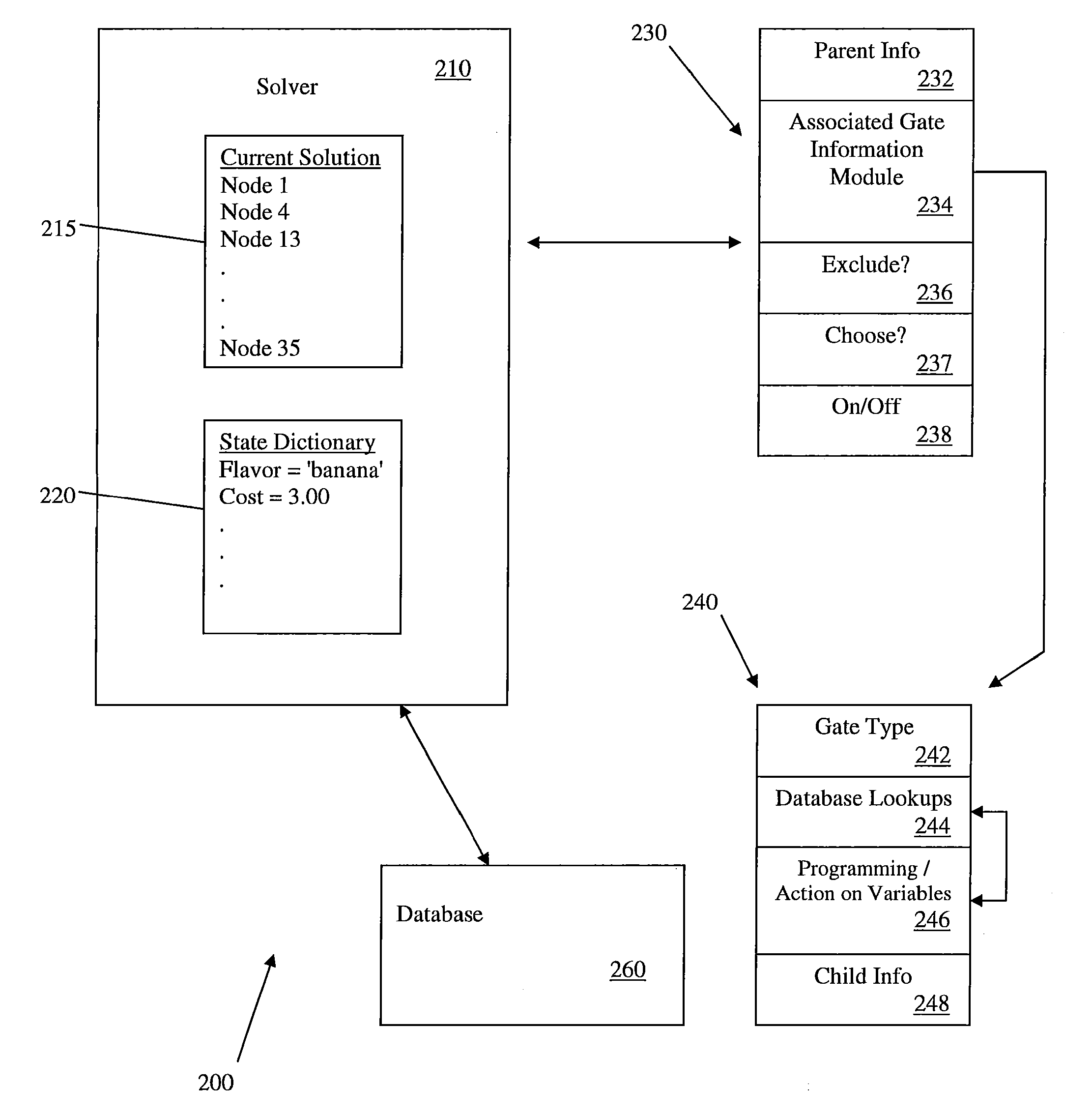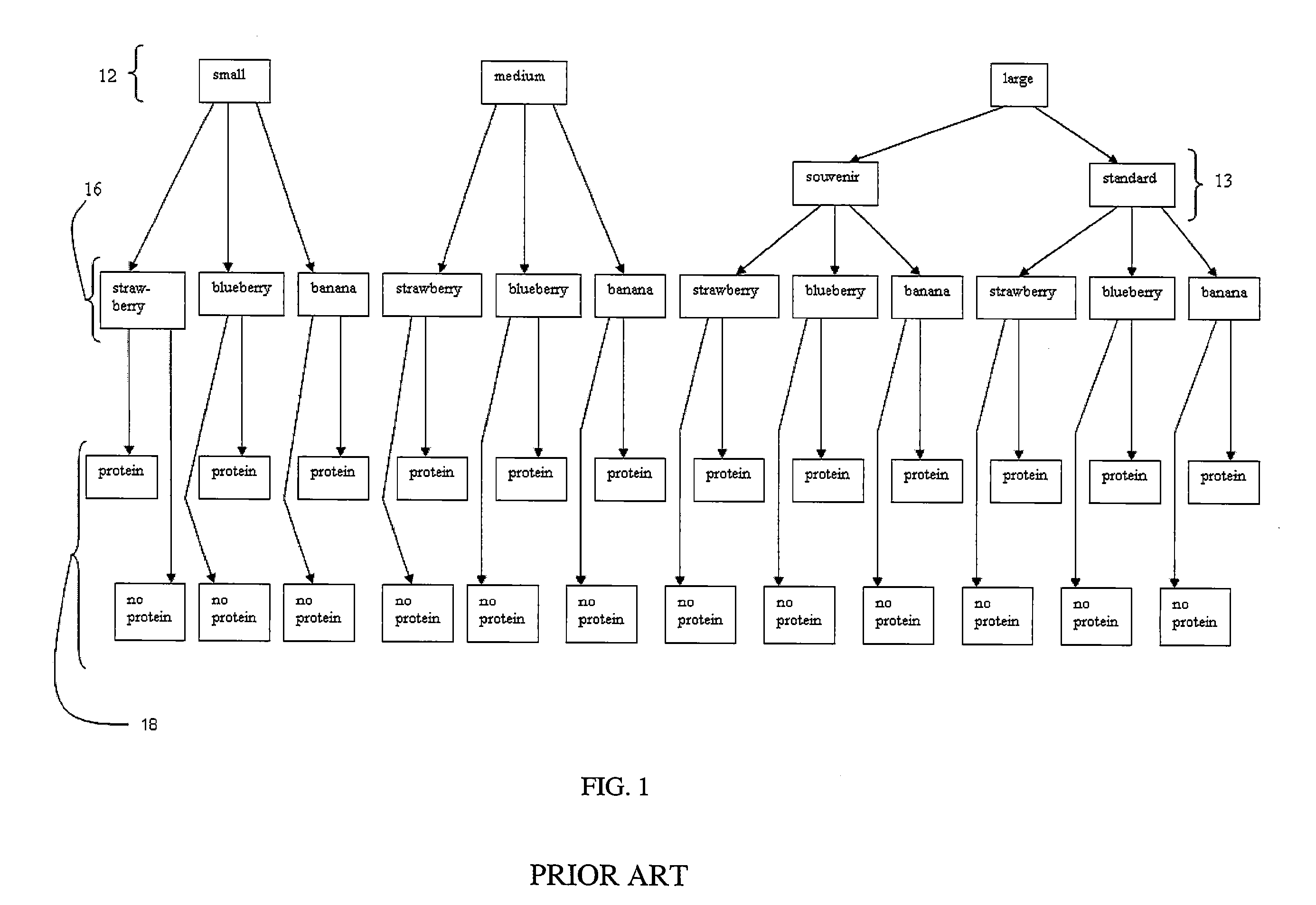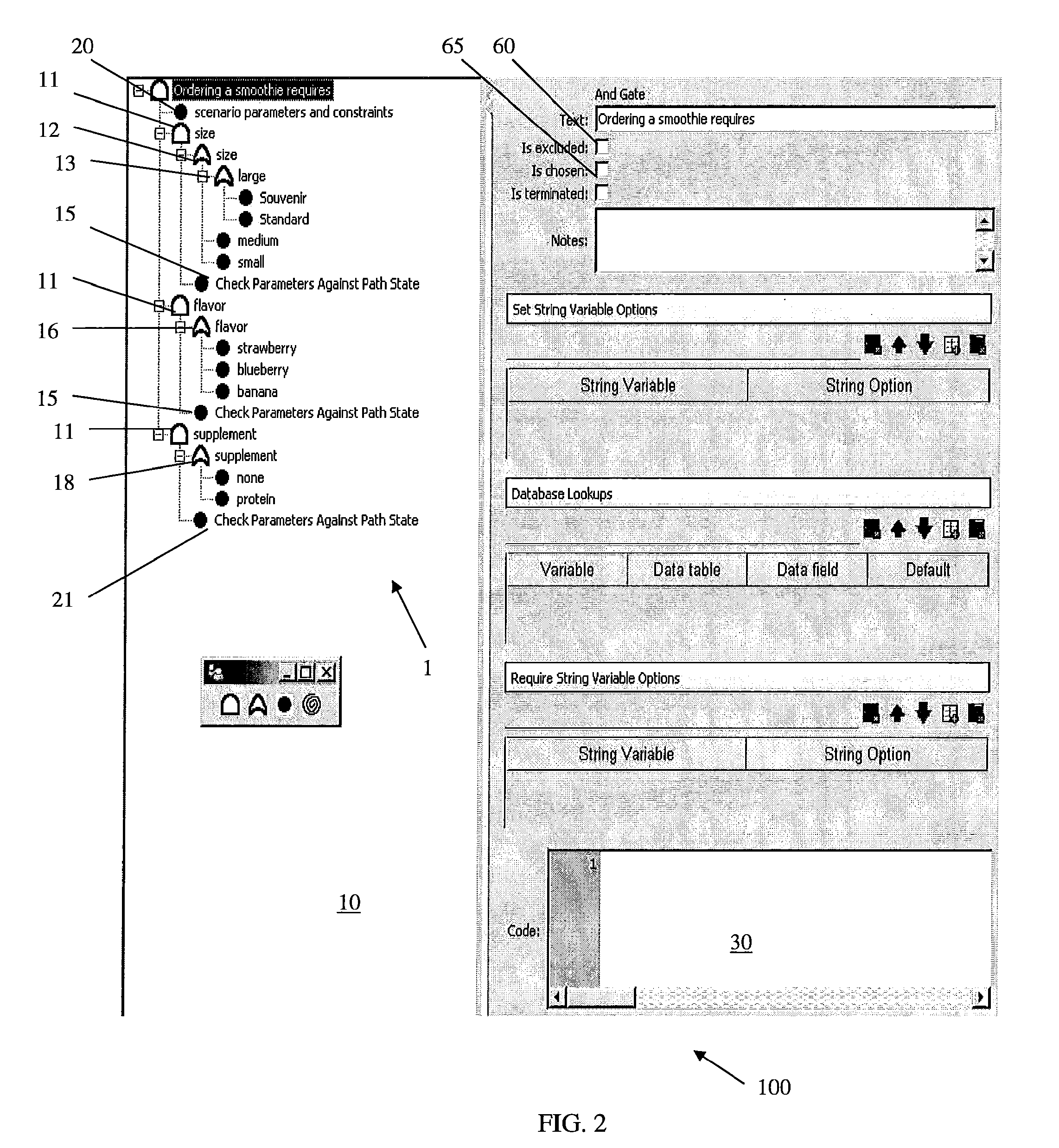System and method for modeling and analyzing complex scenarios
a technology of complex scenarios and systems, applied in the field of systems and methods for modeling and analyzing complex scenarios, can solve the problems of ineffective slow combing through tens of millions of possible solutions, practically impossible analysis, and largely useless, so as to reduce the time and computing power needed, and eliminate the burden on the analys
- Summary
- Abstract
- Description
- Claims
- Application Information
AI Technical Summary
Benefits of technology
Problems solved by technology
Method used
Image
Examples
Embodiment Construction
FIG. 1 illustrates a Prior Art Possibility Tree 1, in which the above mentioned smoothie example is fully diagrammed. This example is utilized for illustration purposes only, and should in no way be seen as limiting. Prior Art Possibility Tree 1 contains three levels 12, 16, 18 representative of the three nodes discussed above—size 12, flavor 16, and protein supplement 18. The size row 12 additionally contains a sub-row for the souvenir cup option 13 under the “large” option. Of course, the tree could be represented in a much more compact form by using an OR gate to condense each row, and by combining each of the rows with an AND gate. However, the number of branches and solutions would remain the same.
To analyze such a Possibility Tree 1, each branch must be individually executed in full, with each possible solution (valid and invalid alike) being compiled for later analysis. The example shown in FIG. 1 is representative of only a few nodes with several possible choice alternatives...
PUM
 Login to View More
Login to View More Abstract
Description
Claims
Application Information
 Login to View More
Login to View More - R&D
- Intellectual Property
- Life Sciences
- Materials
- Tech Scout
- Unparalleled Data Quality
- Higher Quality Content
- 60% Fewer Hallucinations
Browse by: Latest US Patents, China's latest patents, Technical Efficacy Thesaurus, Application Domain, Technology Topic, Popular Technical Reports.
© 2025 PatSnap. All rights reserved.Legal|Privacy policy|Modern Slavery Act Transparency Statement|Sitemap|About US| Contact US: help@patsnap.com



